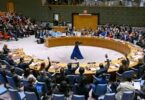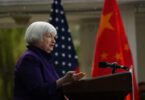Amid depleting foreign exchange reserves, the reckless borrowing journey of Pakistan is on the end of which is not in sight. The government is holding road shows in the Middle East, UK and the United States to borrow up to $ 3 billion by selling Sukuk Bonds in Capital Market. These bonds are floated in the international market with the sole purpose to take pressure off the State Bank’s foreign exchange reserves that are depleting at a rapid speed.
The Central Bank’s official foreign Exchange reserves have depleted to $ 13.6 billion showing a decline of $ 7 billion in one year due to mounting trade and debt related payments. The current account deficit widened over $ 5 billion during July-October period of the current fiscal year which is higher by almost 122 percent over the same period of last fiscal year. It indicates that the decreasing trend of exports and home remittance has exacerbated.
Last time Pakistan floated Sukuk bonds in September 2016 at the interest rate 5.5 percent which is higher than the mark up rate of World Bank and Asian Development Bank. In September 2015, five years Euro Bond was sold at a very high interest rate of 8.25 percent which was the most expensive deal. For such loans valuable national assets are mortgaged. Earlier loans were acquired by mortgaging Motorway M-1 and M-2 and the new loans will be backed by M-3. This sort of monetary policy leads to surrender of national control over country’s resources. The example of Greece is an eye opener for the Mandarins of the Finance Ministry who dare not to tell the political leadership about the grave consequences of crossing the red line in loans acquiring policy. The Greek Prime Minister Alex Trispris refused to pay back the loan taken by the governments of his predecessors because not only even the utility services like telephone, postal service and water supply system were on mortgage with IMF and European Commercial Bank. The public debt has reached to 70 percent of the shrinking Gross Domestic Product. The economy has reached the red line. Facilitation of exports provide viable way-out from this impasse. But exports ca not go up unless cost of production is lowered by reducing power and electricity tariffs and giving subsidy on the exports of rice, sports, surgical goods and light engineering products . Export subsidy is available on sugar. The exporters of other goods should not be deprived of this facility. Pressure on foreign exchange can be relieved with exports facilitation and imports curtailment measures.






